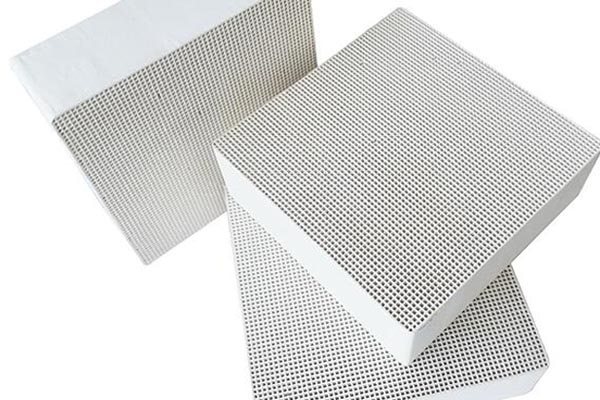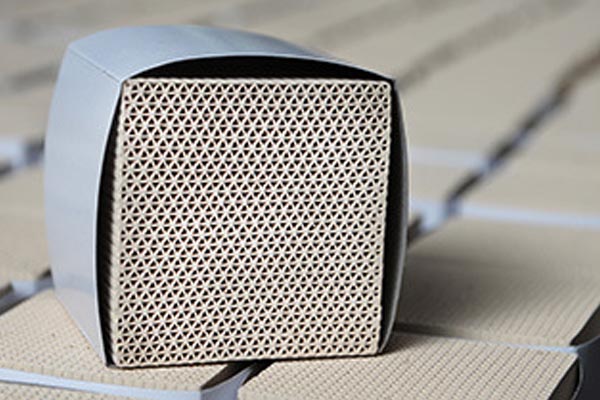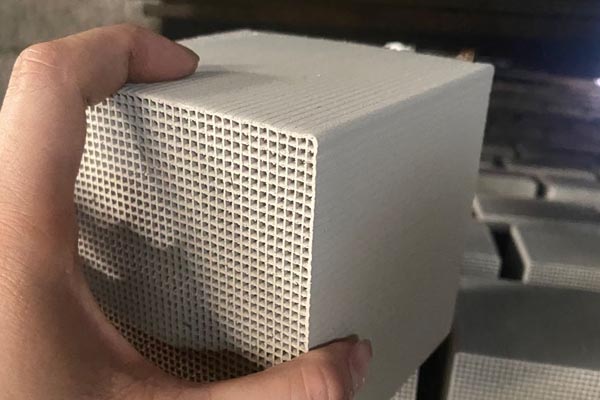
Because there are uniform small internal pores in the molecular sieve structure, Jiujiang When the molecular linear degree of reactants and products is close to the pore size of the crystal, the selectivity of catalytic reaction often depends on the corresponding size of the molecule and pore size. This selectivity is called shape selective catalysis. There are two mechanisms leading to shape selectivity. One is caused by the difference of diffusion coefficient of molecules participating in the reaction in the pore cavity, which is called mass transfer selectivity; The other is caused by the space limitation of the transition state of the catalytic reaction, which is called transition state selectivity. Molecular sieve has clear pore cavity distribution, extremely high internal surface area (600m2/s), good thermal stability (1000 ℃), and adjustable acid site center. The acidity of molecular sieve mainly comes from three coordinated aluminum atoms and aluminum ions (AlO)+on the framework and in the pores. The OH based acid sensitive site center on the molecular sieve HY obtained by ion exchange, and the aluminum ion outside the framework will strengthen the acid site, forming the L acid site center. Polyvalent cations such as Ca2+, Mg2+and La3+can show the acid site center after exchange. The reduction of transition metal ions such as Cu2+and Ag+can also form acid site centers. In general, the higher the Al/Si ratio, the higher the specific activity of OH group. The modification of zeolite acidity can introduce protons through direct exchange of dilute hydrochloric acid. major This method often leads to dealumination of molecular sieve framework. So NaY will become NH4Y and then HY.

major The mutual adsorption between molecules is also called "van der Waals gravity". Although molecular motion speed is affected by temperature, material and other reasons, it always keeps moving in the micro environment. Due to the mutual attraction force between molecules, when a molecule is trapped in the inner pore volume of zeolite, it will lead to more molecules being absorbed until the adsorption of zeolite is saturated. Physical adsorption mainly occurs in the process of removing impurities from the liquid and gas phases of zeolite. The porous structure of zeolite provides a large amount of specific surface area, which makes it very easy to absorb and collect impurities. Due to the interaction of molecules, a large number of molecules on the pore wall of zeolite can generate strong gravity, just like magnetic force, So as to achieve the purpose of attracting impurities in the medium to the aperture. Jiujiang Chemical adsorption In addition to physical adsorption, chemical reaction also often occurs on the surface of zeolite, which contains a small amount of chemical combination, oxygen and hydrogen in the form of functional groups. These surfaces contain oxides of earth or complexes that can react with the adsorbed substances, and then combine with the adsorbed substances to gather inside and on the surface of zeolite.

The main material of honeycomb zeolite molecular sieve is natural zeolite, which is an inorganic microporous material composed of SiO2, Al2O3 and alkaline metal or alkaline earth metal. Its inner pore volume accounts for 40-50% of the total volume, and its specific surface area is 300-1000 m2/g, which has the characteristics of high temperature resistance, non flammability, good thermal stability and hydrothermal stability, Jiujiang It is an efficient molecular sieve carrier with good adsorption performance, no secondary pollution, and can be regenerated at high temperature. Its efficiency is 40% higher than that of similar activated carbon. It is widely used in the fields of adsorption, separation, catalysis and environment, and is more suitable for the treatment of organic waste gas with large air volume and low concentration. major The adsorption material has a stable ozone decomposition ability, which significantly improves the decomposition efficiency of VOCs. The adsorption material first forms a special structural effect through the combination design of silver and manganese, which can decompose ozone into active oxygen atoms, and then react with VOCs molecules to form carbon dioxide and water.

Jiujiang There are cavities and channels in the crystal structure of zeolite with large adsorption capacity, whose volume accounts for more than 50% of the total volume of zeolite crystals. Moreover, the micropores of zeolite are evenly distributed, and the pore size is small, which is equivalent to the molecular size of general substances. The internal surface area of zeolite crystals can reach more than 1000 square meters. Therefore, the adsorption capacity of zeolite is particularly large. The holes and channels inside the highly selective zeolite crystal are uniform and fixed in size, and the diameter of the holes is generally 6~15A. Direct selling Only molecules with smaller diameter can enter the cavity through the zeolite channel and be adsorbed, while large molecules cannot enter the cavity and be adsorbed. Zeolite is also called molecular sieve because of its selective adsorption performance. However, silica gel, activated carbon and other adsorbents have no selective adsorption and screening performance due to their non uniformly fixed pore sizes and large changes. Price of Shunyi zeolite filter material



